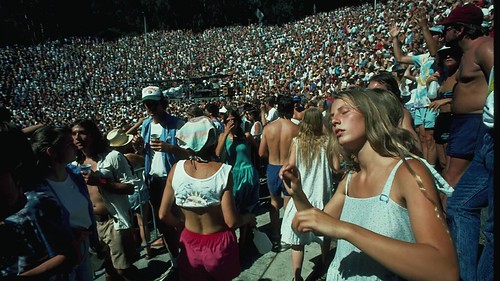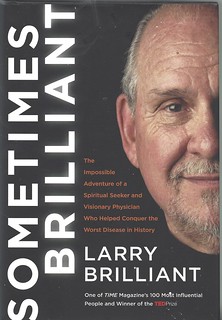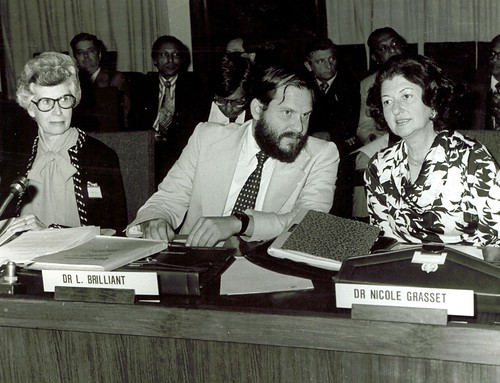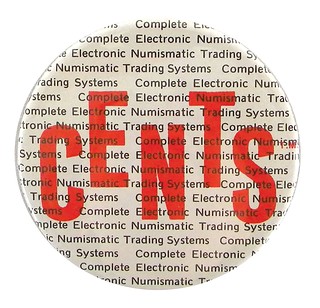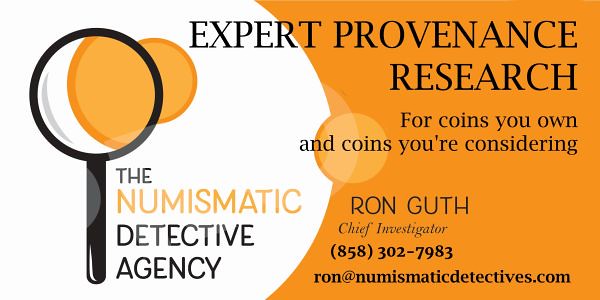
PREV ARTICLE
NEXT ARTICLE
FULL ISSUE
PREV FULL ISSUE
HOW LARRY BRILLIANT BUILT THE INTERNETThis week BBC published an article headlined "How the Grateful Dead built the internet". Here's an excerpt, and yes, there's a numismatic connection: my old boss Dr. Larry Brilliant, who developed a computer-based network for coin collectors before pivoting to apply the software in co-founding The Well, which became the online hangout for Deadheads and countless internet pioneers. Following the BBC excerpt are excerpts from earlier E-Sylum articles about Larry's Complete Electronic Numismatic Trading Systems (CENTS). -Editor Before the internet took over the world, psychedelic rock band The Grateful Dead were among the first – and most influential – forces at the dawn of online communication. [T]he Dead shaped far more than rock, psychedelia and '60s drug culture. Thanks to a group of music-loving tech enthusiasts, the Dead popularised what some call the first real online community. Generations later, the ideas formed in this pioneering digital space still reverberate through our daily lives. Fans of the Dead, known as "Deadheads", were inspired by the band's embrace of all things technological, from their pioneering sound systems to their immersive multimedia visuals. Many fans were technologists and engineers themselves, working in Silicon Valley or at universities around America with access to early internet technology – which they were using by the late 1970s to swap hot commodities like Grateful Dead setlists and illegal drugs. In the 1980s, years before the World Wide Web, a virtual online community emerged called the Well (the Whole Earth 'Lectronic Link). Centered on the San Francisco Bay Area of California, the Well not only thrived in its own right, but proved to be one of the most influential factors in the birth of the internet as we know it today. And its long life was in large part thanks to fans of the Grateful Dead. The Well was borne out of a project started by writer, activists and businessman Stewart Brand, who began producing a print publication he called the Whole Earth Catalog in the 1970s. Inspired by the back-to-the-land movement which was seeing thousands of hippies across America start up communes, the Catalog was designed to provide "access to tools" – its slogan – that anyone could use to build their lives around the ecological and spiritual principles of the movement. That meant that alongside the physical tools it offered for sustainable living – like solar stills, looms, and seed kits – it featured an array of books and pamphlets by thinkers – like Buckminster Fuller and Marshall McLuhan – meant to provide insight into how to lead better, more thoughtful lives. The Catalog was enormously influential, and not just on hippies. Apple cofounder Steve Jobs called it "one of the bibles of my generation" in a famous 2005 speech.
The Well was a "bulletin board system" (BBS), an early text-based approach to online communication that long predated the mainstream internet. People could dial into a BBS using a computer and a phone line, where they would send messages and share files. But the Well was more advanced than other BBS's. In the 1980s, these systems typically ran off a single modem, usually in someone's home, and only one person could dial in at a time. Real-time conversation between multiple users was impossible. The Well, operating out of the Whole Earth Catalog's San Francisco office, was among the first to change that. It was professionally run on command-line PicoSpan software, and sported the hardware necessary for multi-user use and conversation – fifty people could be online chatting at the same time. This was a revolutionary experience. At its launch, the Well was populated by a diverse group of conversationalists. The canny owners gave free invitations to journalists, computer enthusiasts and other prominent figures in a culture centred on Silicon Valley-style experimentation and forward thinking. The Well emphasised independence and ownership: the login screen told users "You own your own words". Many see it as the first time user-generated content was recognised as the inherent value proposition of an electronic tool. Eisenhart, at the time the editor of a Bay Area computer magazine MicroTimes, remembers how Grateful Dead fanzines made her think about connecting members of the fandom. "[The fanzines] would get these heartrending letters from people who thought they were the only Deadheads in their state, but now at least they could connect with other Heads," she says. "I was very drawn to the ability to overcome the barriers of time and space to connect with those you had some actual affinity with." Before long, the Well's Grateful Dead space exploded in popularity. At $2 an hour to dial in (about $6 or £4.50 today) along with its $8 membership fee ($23 or £17.20 today), the Deadheads' devotion to endless discussion of their favourite band helped fund the entire platform. For cyberspace denizens who wanted to engage in discussion and collaborate with the people who were shaping the future of virtual communities, the Well was the place to be. Alongside the Well's many Deadheads, members included technology journalists like John Markoff and Steve Levy; entrepreneurs Craig Newmark, founder of Craigslist; Steve Case, founder of AOL; homebrew computer enthusiasts like Apple cofounder Steve Wozniak; phone phreakers and hackers; libertarians; hippies; and even the founders of Wired magazine. The Well represents a moment in history when, as founder Stewart Brand put it in Rheingold's book, "personal computer revolutionaries were the counterculture". Long before the mainstreaming of social media and smartphones, a virtual community was a truly groundbreaking concept. Before TikTok, Instagram and Facebook were AOL, Prodigy and CompuServe, and before them were USENET user groups, The Well and homebrew bulletin board systems. And what was before The Well? The connection is Dr. Larry Brilliant of Michigan, his company Networking Technologies International (NETI) and its PicoSpan software. Here's what I wrote in The E-Sylum back on November 11, 2001. -Editor
When I worked at Bell Labs in New Jersey during the early 80's, I moonlighted as a consultant for Dr. Brilliant's company, which was based in Ann Arbor, MI at the time. He had hooked up with a couple hackers who ran a bulletin board system on a server in one of their homes. They created an interactive conferencing system with many elements of today's chat rooms and newsgroups. I did testing and commented on user interface design. It was a plain scrolling text interface that you could dial in to via the GTE Telnet network.
The company later had some sales to groups like AT&T's Legal Dept., which used it as groupware to discuss legal documents. But the system was way ahead of its time and failed, because in those days long before the popularization of the Internet, there were still only a handful of first adopters with PCs and modems having the capability to dial in. We geeks thought it was the bee's knees, but it went nowhere. Larry closed the company, but moved to San Francisco and ended up cofounding The Well with Stuart Brand (of Whole Earth Catalog fame), this time creating the first commercially successful online community. In my library I have copies of the user documentation for the system and a handful of scrolled paper printouts documenting some interactive sessions. In one, Larry Brilliant wrote: "It was a real treat to be able to sign on to the system via satellite from Kathmandu, Nepal. We are making world history with the longest distance coin deal ever ..... wonderful." (August 15th, 1983). At the same time, also working for Brilliant's company was numismatist Craig Whitford. Craig and I participated in a 2021 NNP Symposium panel on "The Early Days of Online Numismatics" where we talked about our experiences. When I began selling my mainline numismatic library through Kolbe & Fanning we offered these early materials on computerized numismstics as lot 323 on the K&F sale 168. Here's cataloguer David Fanning's description. -Editor
The Dead Sea Scrolls of Online Numismatics
An important archive of materials from the early days of online numismatics. The Complete Electronic Numismatic Trading System (CENTS) was developed by Larry Brilliant and Joe Lepczyk, and was produced by MarketNet Technologies. It is regarded as the earliest computer-to-computer network for coin collectors, dealers and others connected to the hobby; it was intended to function as an online competitor to the hardwired teletype system used throughout the hobby at the time. It had four modules: CollectorPac, InvestorPac, DealerPac and AuctionPac. The main communications network was CoinTalk, intended as an easy way for CENTS users to talk to one another. The November 1983 issue of PC Magazine had a feature article on CENTS, and Ed Reiter wrote about it in the New York Times of July 31, 1983.
Of true historical interest, blending content that seems amusingly outdated (technical talk) with topical discussions that still seem timely (the section on online etiquette could have been written last week). The supplementary materials here present include technical information on the systems. Getting online in the pre-Internet era meant dialing an analog (non-digital) phone, connecting the handset to a modem, typing commands and getting text responses. The CoinTalk user manuals explain the process in detail. Appendixes list local phone numbers across the U.S., explain User IDs and passwords, how to navigate and enter text. CoinTalk was the "electronic bourse" of CENTS. CoinTalk was built on Confer, a conferencing system running on a mainframe computer in Michigan. Wayne Homren wrote to Joe Lepczyk in July 1983 offering his services as a consultant to Lepczyk's MarketNet Tech, Inc. and the CENTS system. He was hired, and the correspondence files included here generally relate to Homren's work on this project. The group of later files include printouts of emails and postings on the COINS mailing list, discussion of the rec.collecting.coins Usenet group, the ANA's CD-ROM project to digitize The Numismatist, the ANA Numismatic Information Network (NIN) and Multi-Media Committees, and the Numismatic Indexes Project (NIP). A fascinating group of material.
To read the complete article, see:
To watch the 2021 NNP Symposium panel on the early days of online numismatics, see:
To read the earlier E-Sylum articles, see:
Wayne Homren, Editor The Numismatic Bibliomania Society is a non-profit organization promoting numismatic literature. See our web site at coinbooks.org. To submit items for publication in The E-Sylum, write to the Editor at this address: whomren@gmail.com To subscribe go to: Subscribe All Rights Reserved. NBS Home Page Contact the NBS webmaster 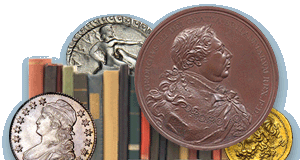
|
